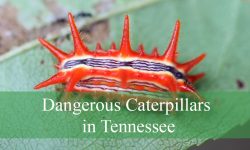Tarantulas, often associated with fear and fascination, have a diverse range of species inhabiting various regions across the globe. Some tarantulas stand out for their reputation as the most aggressive and formidable creatures in the spider kingdom.
The behavior of aggressive tarantulas can vary depending on factors such as environmental conditions, species, and individual temperament. Their intimidating nature and defensive instincts have captured the attention of arachnid enthusiasts and researchers alike.
Most Aggressive Tarantula Spiders
Identifying the most aggressive tarantulas can be a daunting experience since there is no scientific evidence. Here is a detailed list of the most active tarantulas in the world:
Cobalt Blue Tarantula
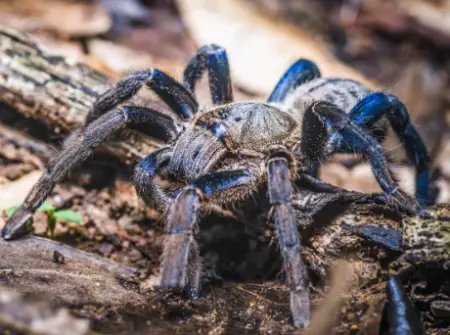
The tarantula species is native to Myanmar and has a striking blue coloration. It is one of the most defensive and aggressive tarantula species.
The cobalt blue tarantulas usually hiss and bite if threatened or cornered. The urticating hairs can cause discomfort and irritation when come into contact with human skin or eyes.
The females and males have blue legs. But the males start taking a lighter tan coloration during the final molt stage. The females grow larger than their male counterparts over time.
African Rear-Horned Baboon Tarantula

It is a large and intimidating tarantula species native to Southern Africa. Lesotho and Botswana are the leading countries with numerous tarantula species.
These tarantulas can grow up to 5 inches with 12-year life expectant in captivity. They feed on insects and worms that foster fast breeding.
African rear-horned baboon tarantulas display aggressive behaviors when threatened. But they prefer to retreat to avoid conflict in most cases.
Orange Baboon Tarantula
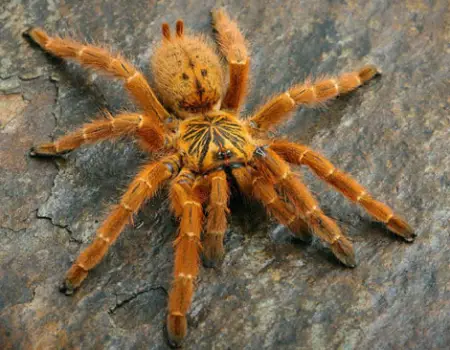
It is also known as Mombasa golden starburst tarantula. The tarantula species is native to Angola in Africa. These spiders move fast when provoked to exhibit their aggressive behavior.
They also have venomous glands and fangs for injecting venom into the prey. But the venom is not lethal to humans though it can cause pain and discomfort.
We recommend providing suitable and secure enclosures with minimal disturbances for their well-being when kept as pets. Ensure you have extensive and prior handling experience.
Gooty Saphhire Ornamental Tarantula
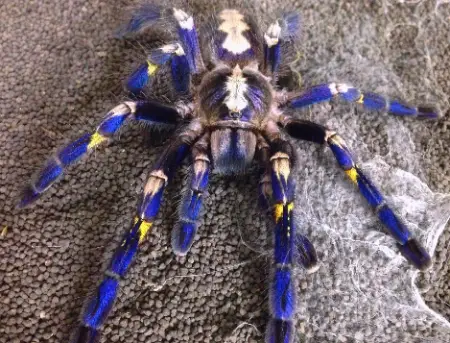
It is a stunning and highly sought-after tarantula species that hails from India. The vibrant blue coloring with accented black markings on the legs and abdomen are distinctive.
The tarantula is an aggressive species and loves hiding in hollows of trees or rocks. Its speed and agility can deliver a powerful bite when threatened.
The spider requires a secure enclosure in captivity with better ventilation and plenty of hiding places. It requires excellent handling experience since it is susceptible to getting stressed.
Skeleton Tarantula
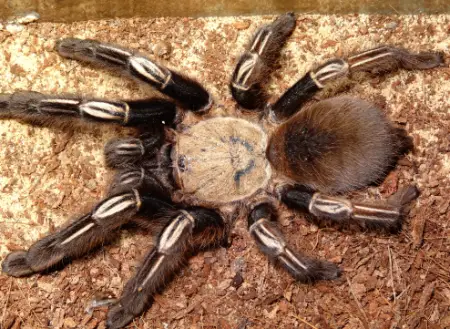
The Skeleton Tarantula (Ephebopus murinus) is a captivating arachnid species native to the rainforests of South America. It has a dark body covered in fine white hairs.
The Tarantula can grow up to 6 inches with unique coloration. They are very fast and aggressive when threatened. They require an experienced tarantula pet owner for better care.
Brazilian Whiteknee Tarantula
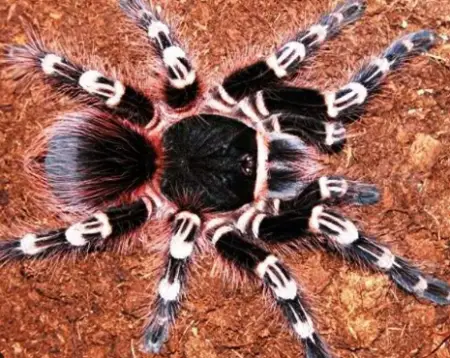
The Brazilian Whiteknee Tarantula (Acanthoscurria geniculata) is an impressive arachnid native to the tropical forests of Brazi. It has a striking appearance with a robust body covered in dark brown to black hair and distinct white bands on its legs.
It can grow up to 6 inches with an intimidating appearance. The tarantula species is a popular choice pet due to its docile nature. But it can be aggressive when feel threatened or provoked in its natural habitat.
Bahia Scarlet Tarantula
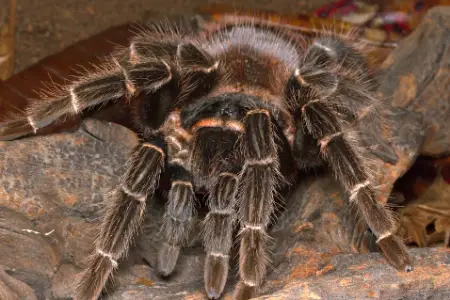
The tarantula species is native to Brazil and can reach 10 inches with dark red hairs under its abdomen. These spiders are defensive and aggressive when they feel threatened or provoked.
These most active tarantulas feed on reptiles and insects. The huge fangs contain venom and are considered the most dangerous to humans.
Thailand Black Velvet Tarantula

These tarantulas are also known as Thailand Zebra leg or earth tigers. They are native to Myanmar, Cambodia, and Thailand.
They spend the most time in burrows and ambush their prey. Thailand black velvet tarantulas have white stripes down the leg and a zigzag pattern on the belly.
The bite and flee are their only defensive mechanism. Tarantula pet enthusiasts need to be careful with this species since its venom is more potent.
Singapore Blue Tarantula
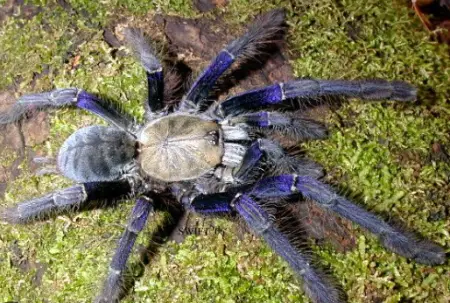
The Singapore Blue Tarantula (Lampropelma violaceopes) is a stunning tarantula species native to the rainforests of Singapore and Malaysia.
It is renowned for its striking appearance and vibrant cobalt-blue coloration, which sets it apart from other tarantula species. With an average leg span of 6-7 inches, this arboreal tarantula is considered a medium-sized species.
The tarantula is docile though it can become aggressive when threatened. It spends most of its time dwelling in trees due to its strong gripping ability and agility to navigate through the branches.
Black Furry Tarantula
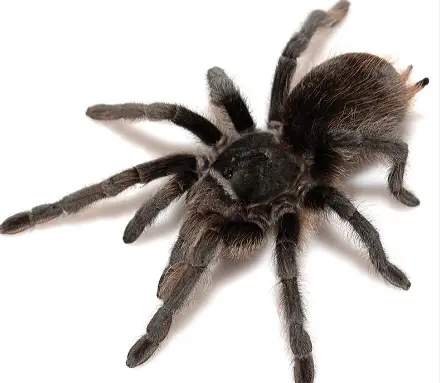
It is also known as black tarantula or Middle East gold. These tiny hairy arachnids are more active at night and love hiding under the rocks.
The females are larger than their male counterparts and they are native to Israel. Its coloration varies from brown, to black, and gray.
These spiders are harmless to humans though they have unpleasant and painful bites. We do not recommend them for beginner tarantula pet enthusiasts.
Kilimanjaro Mustard Baboon Spider
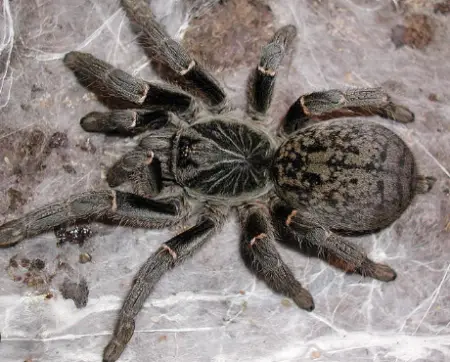
The tarantula species are native to the Mount Kilimanjaro region in Tanzania. The large spider has 15 cm leg spans with a 5cm body length.
It is fairly aggressive compared to others and not suitable for tarantula beginner pet enthusiasts since it requires ultimate care. They dig burrows and tunnels in the substrate.
Togo Starburst Tarantula

It is also called an ornamental baboon tarantula spider. These old-world tarantula species are native to West Africa in countries like Togo and Ghana.
They attain maturity after three years with a leg span of 13cm. The chalky white appearance with black and brown markings is the distinctive feature. They have potent venom and are aggressive.
Burgundy Goliath Bird Eater
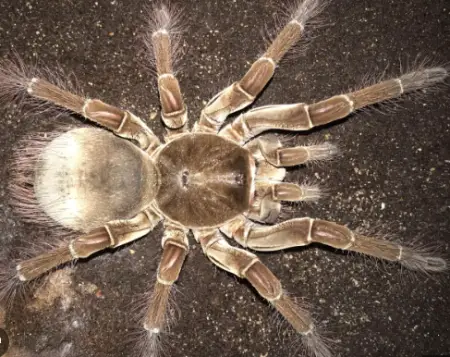
The Burgundy Goliath Bird Eater tarantula (Theraphosa stirmi) is an awe-inspiring arachnid species belonging to the Theraphosidae family. It feeds on insects and other arthropods.
It showcases a robust and hefty build, with females being significantly larger than males. The females can reach an impressive leg span of up to 10 to 12 inches and weigh several ounces.
The body coloration of these tarantulas is predominantly dark brown or burgundy, with some individuals displaying striking patterns of contrasting hues or subtle markings.
When threatened, they may exhibit defensive behaviors, such as raising their front legs, rubbing their fangs together to produce an audible sound, or urticating hairs from their abdomen.
Venezuelan Suntiger Taratula
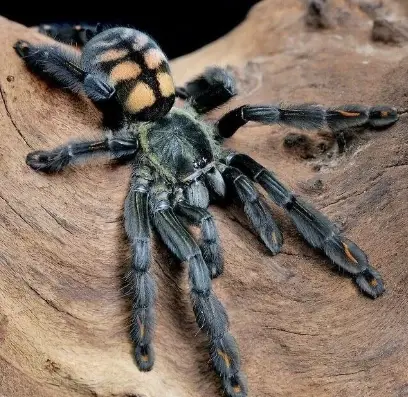
These tarantulas are native to Guyana, Venezuela, and Brazil. They are black with orange chevrons and markings on their legs.
They are defensive when they feel threatened or provoked. They move with speed and can quickly escape from a potential predator.
Colombian Giant Tarantula

This tarantula species is also called the Colombian giant redleg. It is native to Colombian tropical forests and can grow up to 8 inches long.
The tarantula feeds on lizards, insects, and crickets. Their defensive behavior and robust body help them impound on prey with ease.
King Baboon Spider
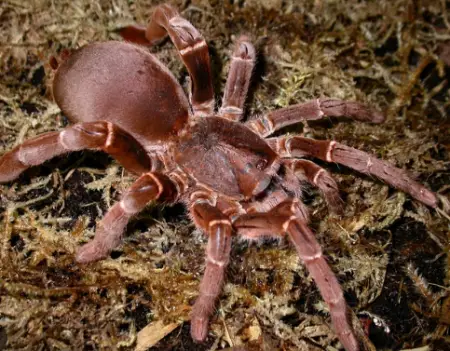
These tarantula species hail from Kenya and Tanzania. They are also known as Giant Baboon Spiders or Mombasa Baboon Spiders.
These hairy tarantulas have a leg span of 8 inches and a robust body. They flick urticating hairs when feel threatened to defend themselves from potential predators.
The potent venomous bites from these tarantulas are not life-threatening to humans. We do not recommend them to inexperienced tarantula pet enthusiasts.
Chilean Rose Tarantula

It is also known as a rose-haired tarantula native to the desert of Bolivia, Chile, and Argentina. The docile nature and striking appearance is the reason behind the popular choice of spider pet.
These spiders are usually calm and relaxed though they can exhibit defensive behavior. The bites are not life-threatening to humans but the urticating hairs can cause discomfort.
Brazilian Red and White Tarantula
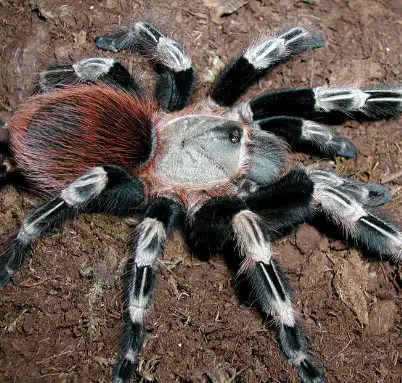
The Brazilian Red and White Tarantula (Nhandu chromatus) is native to Brazil. It is highly popular among tarantula enthusiasts due to its vivid coloration and impressive size.
They have a stocky body covered in dense, bristly hairs, which adds to their unique appearance. It constructs burrows in the wild, providing it with a secure retreat and a suitable environment for hunting.
These tarantulas are docile but may become defensive if they feel threatened since they possess fangs and venom, although their venom is not considered dangerous to humans.
Final Thoughts from Expert
Aggressive tarantulas stand out as some of the most formidable and intimidating arachnids in the world. Their aggressive behavior is a result of various factors, including their territorial nature, defensive instincts, and heightened sensitivity to perceived threats.
These tarantulas often display warning postures, fang displays, and swift movements when provoked or cornered. These tarantulas prefer to avoid confrontation and will resort to aggression only as a last resort.
People Who Read This Also Read:




